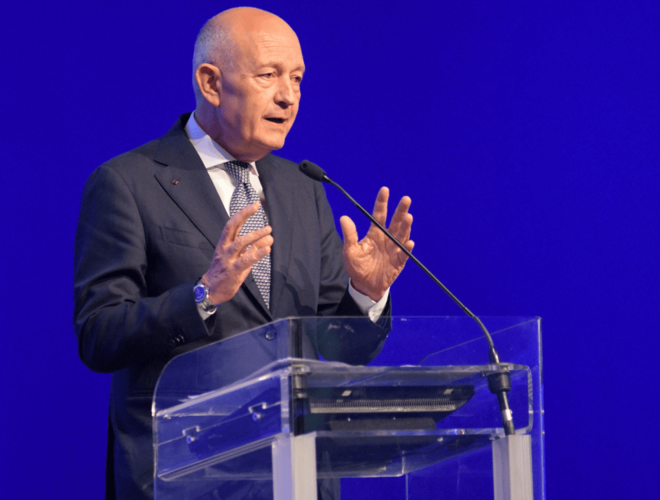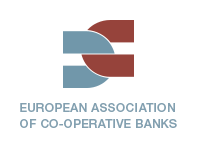| Augusto Dell’Erba is member of the EACB Board and Federcasse Chairman since 2017. He’s a civil Lawyer and Chairman of the BCC of Castellana Grotte (Bari) as well as Chairman of the Puglia Regional Federation of BCCs. Mr Dell’Erba is member of the Executive Committee of the Italian Banking Association and chairs the Association’s Small Banks Committee. Since 2011 he is also the President of the BCCs’ compulsory DGS. In 2018, he became Vice President of the Italian Banking, Finance and Insurance Association (FeBaF). |
|
| Dear Mr. Dell’Erba, it is a pleasure for us to interview the President of Federcasse, could you please briefly describe to our readers the co-operative banking landscape in Italy? |
|
|
In Italy, there are 270 Banche di Credito Cooperativo (BCCs). Together they have more than 4,233 branches and 1.3 million members. Deposits and funds from members and clients amount to 160 billion. Loans to households and SMEs amount to 132 bilion. Own funds exceed 20 billion euros.
The BCCs are very rooted in the Italian economic fabric, which is mainly constituted by small and medium enterprises. They are authentically “community banks” that, through the members, invest in the territory the savings of that same territory. We believe this is a value that counteracts the impoverishment of entire areas already penalized by a very heavy economic and productive crisis. In particular, in the most difficult years of the crisis, the BCCs have not ceased to support the real economy (the one represented above all by families and small businesses), continuing to carry out their historical, proven, anti-cyclical function.
Today they are committed to supporting new forms of youth entrepreneurship (and many innovative start-ups) and to spreading a culture of the territory in a broad sense, which also sees a renewed attention to environmental issues, energy saving and the spread of renewable energy.
|
|
| In 2016, the Italian government launched an important reform for co-operative banking. Today, what are the main facts of this reform ? How does it impact italian co-operative banks and the work of Federcasse? |
|
In 2016 the Italian Credito Cooperativo was the addressee of a thorough reform, which changed its organizational structure. The reform is framed essentially around the introduction of a legal entity named the Cooperative Banking Group (CBG). The CBG is formed by a central institution having the legal status of a joint stock company, and, affiliated BCCs that own the majority of the capital of the central institution. BCCs adhere to the CBG through a "cohesion contract". The BCCs, even in a Cooperative Banking group, remain autonomous, cooperative and mutual, with a territorial vocation. The advantage of joining a Group is essentially to achieve economies of scale and, in particular, the possibility of defining a system of cross-guarantees (pursuant to European banking regulation) in order to prevent critical situations. The setting of the reform on a contractual basis and not on a participatory one (as it happens in traditional banking groups) has therefore characters of absolute originality.
Based on the reform, two Cooperative Banking Groups were set up. They have started operating with this year. One group has Iccrea – headquartered in Rome – as its central institution and counts 142 affiliated BCCs. The other group has Cassa Centrale Banca – headquartered in Trento – as its central institution, with 84 affiliated banks. The law allowed the Casse Raiffeisen of Alto Adige to set up an IPS (Institutional Protection scheme) instead of forming a Cooperative Banking Group. The Raiffeisen IPS will hopefully see the light by the end of the year.
In this context, the role of a national association such as Federcasse, representing all BCCs becomes central. The national association has in fact the task of advocating the interests of all the BCCs in front of European regulators and national supervisory authorities, regardless of the Cooperative Banking Group to which they belong to. Federcasse promotes in all venues the values of the mutualistic cooperation in Banking. Moreover, Federcasse gets the ownership – as the signer – of the national collective labor contract for the more than 35 thousand employees of the system. It is also the “garantor” of what we call the "common goods" of the system: the National Pension Fund of the category, the Mutual health care system etc.,
|
|
|
|
Federcasse has a constant dialogue with the European regulatory authorities and the European institutions. It has closely followed all the phases of the recent “trialogue” for the European banking package and contributed, together with the EACB and the Italian Banking Association, to launch a profound reflection on the issue of proportionality which has already given significant first results.
But these are absolutely not enough, given that European legislation continues to not fully understand the value of small banks and wants to apply - contrary to what happened in the United States - identical rules for intermediaries with different business models, legal status, size, etc.
The major challenge remains that of a structural proportionality and not a proportionality applied on a case by case basis. A structural proportionality takes into account normative and organizational differences between significant institutions and institutions considered as "less significant" and - above all - their countercyclical role (recognized in a multiplicity of official acts and documents).
In this field and others, we are convinced that the common action that takes place within the EACB is fundamental. Together, European co-operative banks represent an impressive force. It is important to coordinate the efforts so that the common vision of co-operative banks is brought to the maximum attention of regulators and to define, as soon as possible, a truly sustainable regulatory approach.
|
|
|
|


